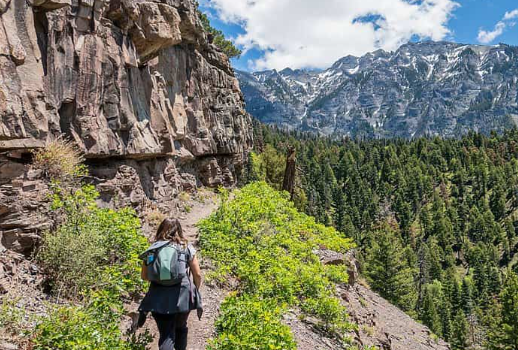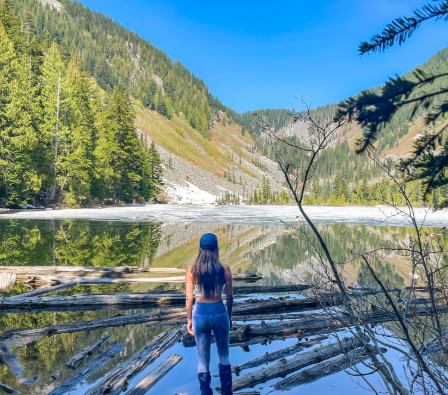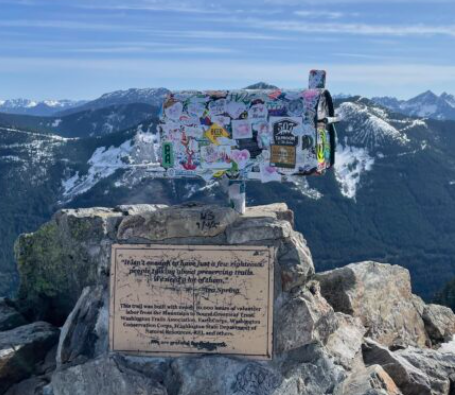
If you’re new to hiking and want to explore some incredible trails, knowing where to start can be a bit tricky. You’ve likely come across stunning hiking photos on Instagram or Pinterest and thought, “Where is that place, and how can I go there?” While some influencers keep their locations private to avoid overcrowding, there are still many resources available for finding those hidden gems. In this guide, I’m sharing all the tools and resources that will help you find the best hiking and backpacking trails, whether you’re just starting or looking for new adventures.
1. Hiking Websites: The Easiest Way to Start
When it comes to finding hiking trails, websites dedicated to outdoor activities are your best bet. These sites often provide detailed trail descriptions, photos, maps, and even useful tools like weather forecasts and trail conditions. For those of us living in Washington State, the Washington Trails Association (WTA) is an invaluable resource, but there are plenty of options available for hikers nationwide.
Some of my favorite hiking websites include:
- AllTrails: This is a global go-to for hikers of all levels. From short neighborhood walks to multi-day backpacking adventures, AllTrails has it all. It even offers offline map downloads for when you’re out of service range. The premium version gives you access to even more features, but the free version is often sufficient. Favorite Features: Downloadable maps, elevation profiles, and the ability to save hikes to your list.
- Hiking Project: For anyone who enjoys detailed, visually appealing trail maps, this is a fantastic option. It not only provides trail data but also color-codes trails by difficulty and includes photos to give you a sneak peek of what to expect. Favorite Features: Detailed maps with photos and trail conditions, perfect for backpackers.
- The Outbound: This platform is great for inspiration. While it doesn’t offer as much detailed planning info, it’s a fantastic place to find new trail ideas and connect with other hikers. You can also follow certain users for future hiking inspiration. Favorite Features: Inspirational trail suggestions and the ability to follow experienced hikers.
2. Google Earth: See the Big Picture
If you’re looking for something more hands-on, Google Earth is a great tool for discovering trails. It’s perfect for exploring potential areas for hiking, allowing you to look for lakes, peaks, and potential trail routes. By hovering over a region, you can often spot faint trail lines that lead you to hidden gems. Once you’ve found something interesting, a quick Google search will usually lead you to more detailed information.
Google Earth is especially useful if you’re after less-crowded spots or want to create your own custom routes, bypassing the typical recommendations of popular hiking sites. Plus, it’s a fun and visual way to plan your adventures and get a lay of the land.
3. Pinterest & Blogs: Tap Into the Wisdom of Hikers
When traveling to unfamiliar destinations, Pinterest and blogs are fantastic resources for finding hiking trails. Pinterest lets you search for specific hiking destinations, like “Best Hikes in the French Alps,” and then leads you to detailed blog posts that break down the trail logistics.
Once you start exploring, you may find lists like “Top 10 Hikes in [Destination],” which can spark ideas for your next adventure. To get more detailed insights, I recommend checking out blogs from hikers who have already experienced the trail. My personal favorites include Barefoot Theory and Clever Hiker, which provide in-depth trail reviews, tips, and gear recommendations.
You can also look at outdoor brands’ blogs, like REI Co-Op Journal and Therm-a-Rest Blog, for inspiration and advice.
4. National Park Service: A Trustworthy Resource
If you’re planning to visit a U.S. national park, the National Park Service (NPS) website is your best friend. The NPS site offers reliable and up-to-date information on trail conditions, closures, camping details, and even necessary permits. It’s the go-to resource when visiting national parks, and you can find detailed lists of available hikes in the “Things to Do” section.
If you’re not sure where to start, the NPS will help you narrow down trails by difficulty, length, and elevation. You can also read about trail closures or conditions in real-time, ensuring that you’re fully prepared for your hiking adventure.
5. Guidebooks: The Classic Approach
While digital tools have taken over most of our hiking planning, don’t underestimate the value of a good old-fashioned guidebook. Many hiking enthusiasts still swear by these, especially for off-the-beaten-path trails that aren’t heavily covered online. Guidebooks often provide more thorough and expert advice than what you’ll find in a typical blog post or hiking app.
Most outdoor stores, libraries, and even Amazon have great hiking guidebooks for specific regions. While it may take more time to research, guidebooks are a great way to learn from experts who’ve already explored these areas in depth.
With these resources in hand, you’re well on your way to discovering amazing hiking trails. Whether you prefer browsing websites, tapping into social media inspiration, or using good old-fashioned guidebooks, there’s no shortage of tools to help you find the best routes. Happy hiking!








